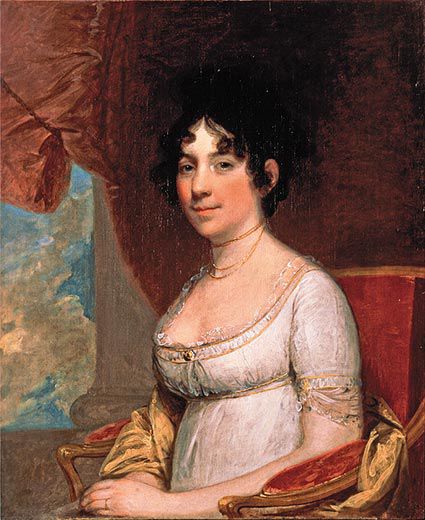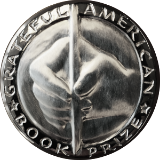Happy Birthday to ‘America’s ‘first First Lady’
Dolley Madison
 According to The White House Historical Association, Dolley Madison was “the most important woman in the social circles of America” in her day. Yet her 255th birthday came and went on May 20th without much fanfare. David Bruce Smith is writing a children’s book about Dolley, known as “America’s first First Lady,” and James Madison, America’s fourth president. They were “the Founding Power Couple,” according to some scholars.
According to The White House Historical Association, Dolley Madison was “the most important woman in the social circles of America” in her day. Yet her 255th birthday came and went on May 20th without much fanfare. David Bruce Smith is writing a children’s book about Dolley, known as “America’s first First Lady,” and James Madison, America’s fourth president. They were “the Founding Power Couple,” according to some scholars.
The National Council for History Education interviewed Smith, author of “Abigail & John,”– about the Adams’s–with his mother, the artist-illustrator, Clarice Smith.
Smith is the founder of the Grateful American Foundation, and co-founder of the Grateful American Book Prize.
NCHE: Most Americans have heard about Dolley and James Madison, but they may not know much justify their story. What made you write about them?
David Bruce Smith: In 1783, thirty-two-year-old James Madison was living in a Philadelphia boarding house. Unmarried, and meek, he was perceived—by some–as a “gloomy, stiff creature…with nothing engaging or even bearable about his manners,” according to Peggy Shippen, the future wife of Benedict Arnold. (The Great Little Madison by Jean Fritz; p. 23.)
Madison’s close friend, Thomas Jefferson, also lodged there, along with William Floyd, a delegate from New York; his 16-year-old daughter, Kitty, and a medical student. Jefferson prodded Madison to court Kitty, and–within months–they were engaged; wedding arrangements were in the works, and then the Floyd’s bolted to New York for the summer.
Three months later, Madison received a letter from Kitty; she had changed her mind: “She felt indifferent to him now and had decided to marry that nineteen-year old medical student.” (ibid).
Madison ditched desire for a decade, displaced the Articles of Confederation, conceived the Constitution, and emerged a celebrity. Eventually, he re-calibrated his reflections on romance, and asked his college roommate, Aaron Burr, to arrange an introduction to the widow, Dolley Payne. When she learned “The Great Little Madison” wanted to meet her, she agreed, enthusiastically.
It was an unlikely alliance–he was 43, and she was 26, but their chemistries coalesced into a partnership that was akin to the alchemy between Abigail and John Adams. They married in 1794; after Madison’s congressional term ended, they retired to Montpelier, but his halcyon hiatus was halted by Jefferson, who summoned Madison to become his Secretary of State; Dolley, meanwhile, segued into a sometimes–substitute hostess for the widowed president.
***
Two months after Madison’s inauguration, Dolley initiated a Wednesday-night tradition. Anyone who wanted to speak with her, or the president, could come to the President’s House. The get-togethers featured food, friendship, and festivity; they also fostered confidence and camaraderie in Washington—and beyond. She took an intense interest in current issues. During dinner parties, she sat at the head of the table and led conversations; if she heard important news pertaining to America at one of her many gatherings or outings, Dolley reported the information to James, promptly: “Dolly’s social graces made her famous. Her political acumen, prized by her husband, is less renowned…her gracious tact smoothed many a quarrel. Hostile statesmen, difficult envoys from Spain or Tunisia, warrior chiefs from the west, flustered youngers—she…welcomed everyone…” (www.whitehouse.gov/about-the-white-house/first-ladies/dolley-payne-todd-madison/)
In 1808, Dolley lassoed control of Madison’s election campaign. Madison did not give any speeches, but he easily won. His opponent, Charles Cotesworth Pinckney, of South Carolina, “whined that he had lost to Mr. and Mrs. Madison. I might have had a better chance if I faced Mr. Madison alone.” (The Intimate Lives of the Founding Fathers, by Thomas Fleming, 2009.)
NCHE: What moments in their lives did you find particularly fascinating?
David Bruce Smith: A somewhat spellbinding smudge of sadness in their lives—partially hidden in the mettle of their marriage—was Payne Todd, Dolley’s son from her first marriage: He [was] “a spoiled, self-centered young man; Dolley had never been willing to discipline him, and James indulged in her wishes. [He] had supervised Montpelier’s finances in James’ absence, which…meant regularly withdrawing large sums of money for drinking, whoring, and gambling…” (The Madisons: America’s First Power Couple, by Alexander Kennedy; pp. 198-205.)
During his dither of distress to pull Montpelier out of its catastrophic cash crisis, “James had something close to a nervous breakdown. His health rapidly worsened…” as they ramped up the rate of copying, editing, and organizing his extensive notes from the 1787 Constitutional Convention. (ibid.) Madison expected the archive to fetch a sizeable sum of security for Dolley and add a little luster to his legacy.
In 1836 James died at the age of eighty-five; the last Founding Fathers.
The following year, the now destitute Dolley returned to Washington, and lived with her sister and brother-in-law. In 1842, she sold Montpelier, its furnishings, and the remaining enslaved people. Secretary of State, Daniel Webster, purchased Paul Jennings, an enslaved man who published A Colored Man’s Reminiscences of James Madison, nineteen years later, and revealed some of Dolley’s difficulties: “In the last days of her life, before Congress purchased her husband’s papers [for approximately $30,000] she was in a state of absolute poverty…I think sometimes suffered for the necessaries of life. While I was a servant to Mr. Webster, he often sent me to her with a market-basket full of provisions, and told me whenever I saw anything in the house that I thought she was in need of, to take it to her…” (The Paul Jennings Memoir in Context – Montpelier’s Digital Doorway )
Payne, meanwhile “…would hang over her like a hungry buzzard, keeping her poor and worried. Only a return to public life seemed to counterbalance the situation. And at last this did come.” from congress: (History on the Auction Block–White House Historical Association: The 1899 Sale of the Estate of Dolley Madison). “By unanimous consent, the House granted her a seat on the House Floor for anytime she chose to visit the Chambers. As a frequent visitor to the Capitol, Mrs. Madison enjoyed the popular pastime of listening to Congressional debate…” (History, Art & Archives; United States House of Representatives; January 8, 1844)
In 1848, Congress bought the remainder of Madison’s presidential papers. The next year, Dolley died, at the age of 81: “She was still a Washington icon, and the entire federal government closed for the day in mourning. She received the largest state funeral in the country’s history up to that date.” (Kennedy, ibid., p. 204.)
A newspaper obituary referred to her as the “first Lady in the land,” and so she has been called “America’s first First Lady.”




